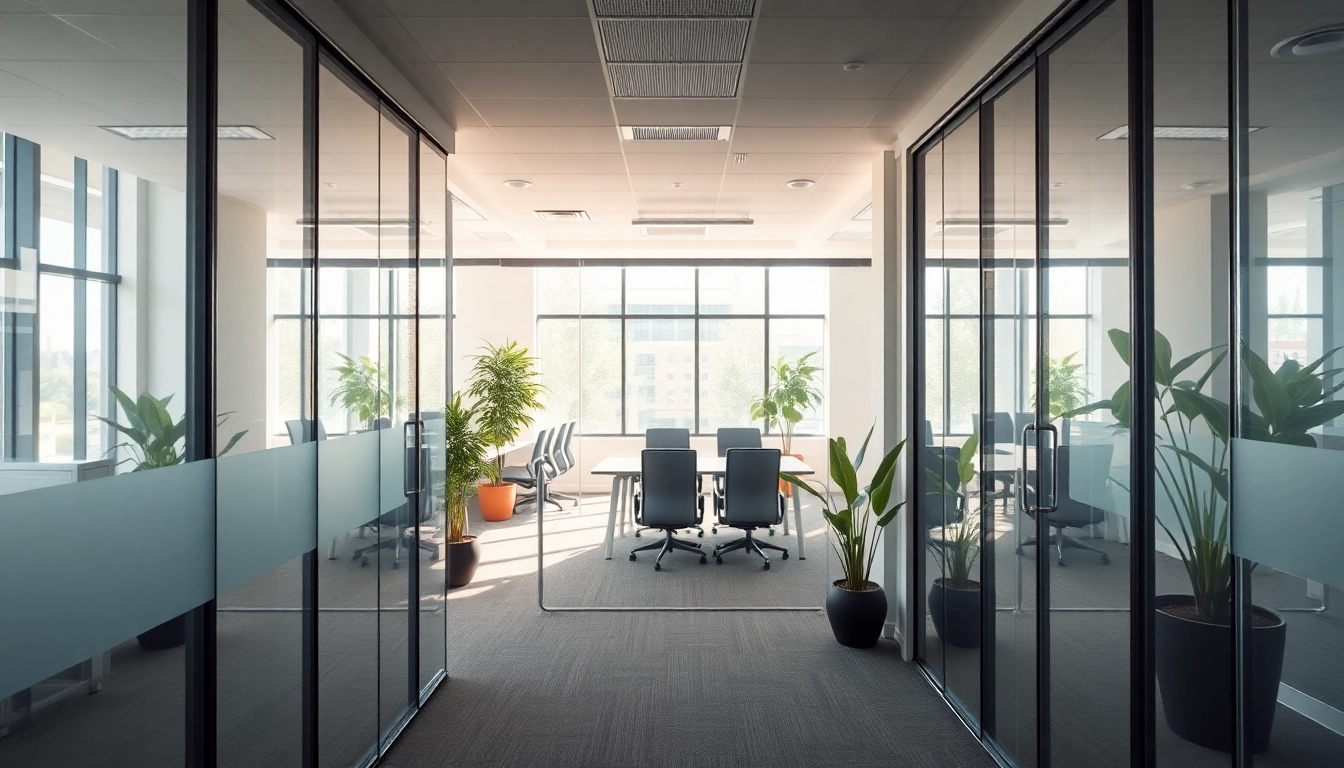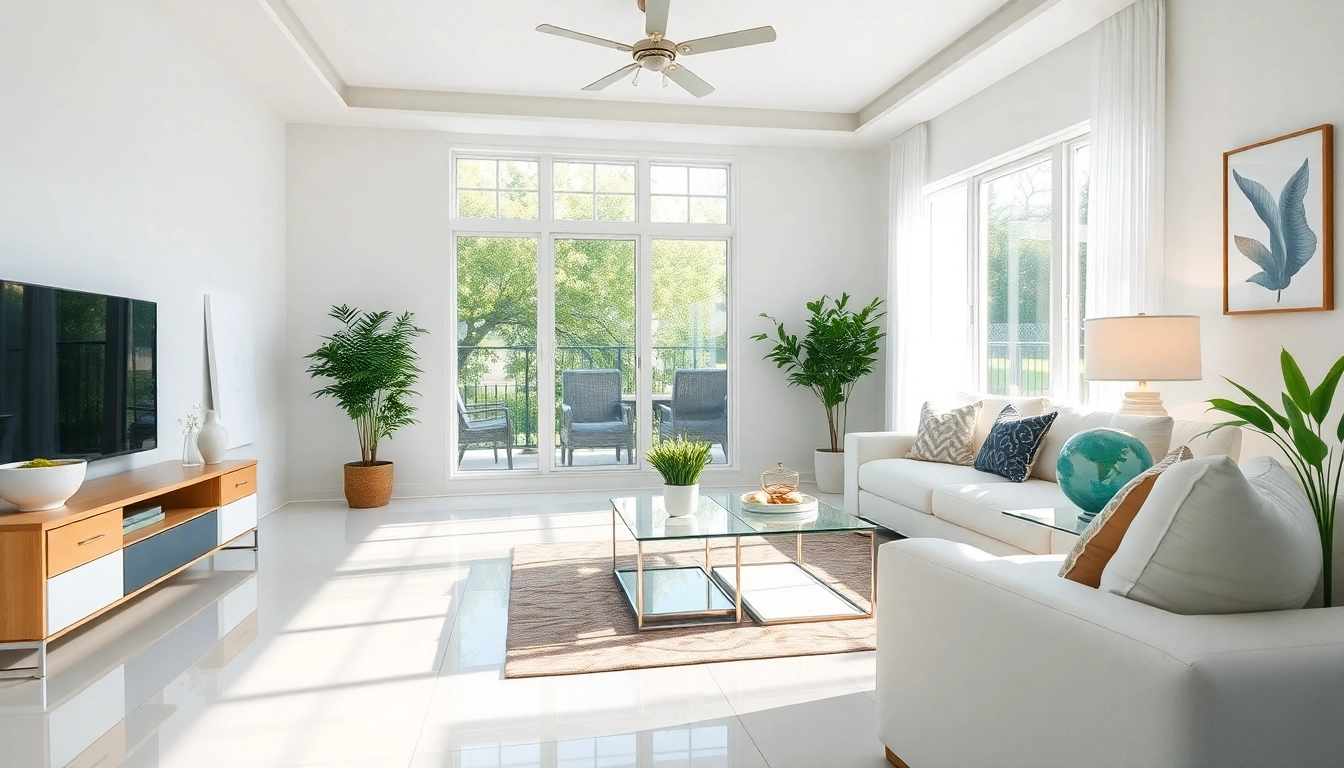Understanding Movable Glass Partitions
In the modern architectural landscape, movable glass partitions have emerged as a game-changer for both commercial and residential spaces. These innovative systems allow for flexibility in design and utilization of space while enhancing the visual appeal and functionality of interiors. This article explores the various dimensions of movable glass partitions, providing insights into their benefits, types, installation processes, design considerations, and maintenance requirements.
What Are Movable Glass Partitions?
Movable glass partitions are architectural elements designed to create flexible boundaries within spaces using glass as the primary material. Unlike traditional partitions, which are often fixed and bulky, movable glass partitions can be opened, closed, or adjusted to suit different needs. They can consist of operable walls, sliding panels, or folding systems, enabling users to create larger open areas or more intimate closed-off spaces as required.
These partitions often incorporate advanced hardware solutions, such as tracks and rails that allow for smooth operation and secure fitting. They come in various styles, including framed, frameless, and custom designs, making them suitable for diverse environments, from offices to hospitality venues.
Key Benefits of Using Glass Over Traditional Partitions
- Open Aesthetic: Movable glass partitions foster a sense of openness and light, enhancing the overall aesthetic of a space.
- Flexibility: These solutions allow spaces to be easily reconfigured, accommodating various functions as needed.
- Natural Light: Glass partitions facilitate the passage of natural light, promoting a brighter and more inviting environment.
- Sound Insulation: High-quality movable glass systems can provide varying degrees of sound control, crucial in environments like offices where confidentiality is important.
- Durability: Glass partitions are designed to last, with robust materials that require minimal maintenance compared to traditional walls.
Common Applications in Different Industries
Movable glass partitions are versatile and can be found across various sectors:
- Corporate Offices: Used to create meeting rooms, conference areas, and collaborative spaces that can be adjusted according to team requirements.
- Hospitality: Hotels and restaurants use glass partitions to define dining areas and facilitate privacy without sacrificing an open ambiance.
- Education: Schools and universities implement glass partitions in lecture halls to create versatile learning environments.
- Healthcare: Hospitals and clinics benefit from glass partitions in waiting areas and consultation rooms, enhancing both functionality and aesthetics.
Types of Movable Glass Partitions
Framed vs. Frameless Glass Partitions
When choosing movable glass partitions, one of the key decisions centers around whether to opt for framed or frameless designs:
- Framed Glass Partitions: These feature a visible frame around the glass, typically made of aluminum or steel. This type offers durability and support, making them ideal for areas requiring robust structures, such as office environments with frequent use.
- Frameless Glass Partitions: These provide a sleek, minimalistic look with no visible frames. They create an uninterrupted view and allow for more natural light to permeate the space. Frameless options are often favored in high-end residential and luxury commercial settings.
Sliding vs. Folding Mechanisms
Movable glass partitions come with different operational mechanisms, primarily sliding and folding, each suited to specific needs:
- Sliding Mechanisms: These involve panels that slide along a track, allowing for quick and easy movement. They are useful in spaces where there is minimal wall space to accommodate the opening of doors.
- Folding Mechanisms: These panels can be folded back to one side, offering wider openings without compromising on stability. Folding partitions are ideal for larger areas that require seamless transitions between spaces.
Custom Solutions for Unique Spaces
Every project has its distinct requirements. Customizable movable glass partitions allow architects and designers to tailor solutions that meet specific constraints, whether it’s dealing with unusual dimensions, integrating technology, or complementing existing designs. Custom solutions can include:
- Specific glass thickness for enhanced sound control
- Integration of smart technology like automatic opening and closing systems
- Customization in color or finish to match branding or decorative themes
Installation Process for Movable Glass Partitions
Preparing Your Space for Installation
Preparation is crucial for a successful installation of movable glass partitions. This includes ensuring that the area is clear, assessing the structural integrity of walls and ceilings, and confirming that all necessary hardware and materials are on site. It’s also essential to coordinate with other contractors (e.g., electricians for any embedded technology) ahead of time to avoid delays.
Understanding the Timeline and Costs
The timeline for installing movable glass partitions varies depending on the complexity of the project. Typically, it can range from a few days for simple installations to several weeks for more customized solutions. Costs are influenced by factors such as:
- Type of glass used
- Size and design of the partitions
- Installation labor rates
- Additional features like soundproofing or smart technology
Choosing Professional Installers for Best Results
To ensure the success of your installation, engaging professional installers is critical. Qualified experts are familiar with the specific challenges posed by glass-based installations, including safety standards and precise mechanical calibration. Additionally, they can provide valuable insights about the best products and practices suited for your particular environment.
Design Considerations for Movable Glass Partitions
Integrating with Existing Office Layouts
When integrating movable glass partitions into pre-existing spaces, understanding the layout is vital. The partitions should complement the flow of movement within the space and align with existing fixtures and furnishing. Conducting a thorough spatial analysis can guide decisions on where partitions will be most effective.
Styling Options to Match Your Brand
Movable glass partitions can be customized with various finishing options, including etched patterns, frosted glass, or colored films. Choosing stylistic elements that resonate with your brand image can enhance your office’s or establishment’s identity, making it more inviting to customers and employees alike.
Utilizing Technology for Smart Partitions
The integration of technology into movable glass partition systems can enhance functionality. Innovations such as automatic doors, integrated lighting, or sound-dampening technology allow for a more adaptive environment. Smart solutions can help manage acoustics and privacy, particularly in office settings, while also adding a futuristic aesthetic to the space.
Maintaining and Upgrading Movable Glass Partitions
Cleaning and Care Best Practices
Proper maintenance of movable glass partitions is essential to preserve their clarity and functionality. Regular cleaning with appropriate glass cleaners helps prevent the buildup of dirt and streaks. It is also advisable to check the hardware periodically for any misalignments or wear, adjusting as necessary to maintain smooth operation.
Assessing When to Upgrade or Replace
While movable glass partitions are built to last, they may still require updates or replacements over time due to wear and tear or upgrades in technology. Key indicators for considering an upgrade include:
- Visible damage or wear on glass or hardware
- Changes in acoustic performance
- Desire for new features such as automatic operation or better sound insulation
Future Trends in Glass Partition Technology
The future of movable glass partitions is bright, with ongoing innovations driving advancements in materials, technology, and design. Trends to watch for include:
- Smart Glass Technology: Innovations like switchable glass, which transitions from transparent to opaque, can provide instant privacy while preserving light.
- Sustainable Materials: Eco-friendly glass production methods and recyclable materials promise a greener approach to construction.
- Enhanced Acoustic Solutions: Advances in sound-dampening technologies can further improve the privacy and comfort of glass partitions in busy environments.
In conclusion, movable glass partitions represent a significant advancement in creating adaptable and aesthetically pleasing spaces. Understanding their benefits, types, installation processes, design opportunities, and maintenance can empower both businesses and homeowners to make informed decisions that enhance their environments and suit their dynamic needs.



